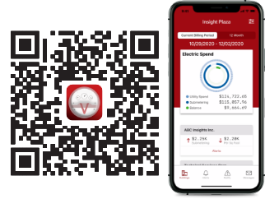Converting From kWh to BTU: A Comprehensive Guide
Utilities are measured in many units, including kWh, ton-hrs, and cubic feet. To evaluate how efficiently you're operating, you need to convert these units to their equivalent energy content, or BTUs.
How to Calculate Building and Equipment Efficiency
If you want to talk about efficiency or energy use in your operations, you need to put all your energy consumption into the same units for a true apples-to-apples comparison that holds true over time. After all, you can't add together or meaningfully compare kWh, ton-hrs, and cubic feet. In the United States, the solution is to convert all energy usage to BTU, or British thermal unit. (Ironically, the Brits now mostly use the metric version of this unit, the joule).
Converting to (k)BTU sounds simple, but it's often anything but straightforward. Like most of life, it’s all in the details – especially which details get attention and which get ignored.
Common Places to Use BTU Calculations
- Cost allocations
- Energy use index (EUI)
- Equipment sizing and purchasing
How to Convert kWh (and Other Energy Types) to kBTU
Efficiency is a calculation of “energy in” over “energy out.” In other words, you need to convert both the energy consumption of the power source and the energy of its output into BTUs and then divide the former by the latter. If you don't convert to BTU, you may end up comparing apples to onions down the line, which helps no one.
For some fuel types, such as electricity, the conversion to BTU is straightforward. For example, 1 kWh of electricity is 3.412 kBTU. For chilled water, 1 ton-hour is 12.008 kBTU.* Pretty simple!
* Okay, you got us. A ton-hour is really 12.008033605 kBTU.
Example BTU and EUI Calculations

The Extra Challenges of BTU Conversion for Steam & Natural Gas
Converting electricity or water to BTU is usually straightforward. However, other energy sources, most commonly steam and natural gas, don’t convert quite so painlessly. Complications arise for three reasons:
- Variation in fuel quality
- Terms of the lease contract
- Pressure of delivered utility vs pressure during operation
Calculating the cost of per BTU for steam and natural gas is often dicey because the fuel source is delivered at one pressure but used at a different pressure, and the pressure affects the energy content of the fuel. For example, steam in NYC is delivered at 165 pounds per square inch. But a heat exchanger can operate at pressures as low as 5 psi. Which pressure value should you use to calculate your tenant’s share of the utility costs: (a) the pressure delivered or (b) the pressure at the point energy is consumed?
We’ve even seen tenants who want to subtract out the energy consumed by the conversion of steam to water in the heat exchanger before they pay their bill. Money is won or lost in these contractual details.
Converting natural gas to BTU has the same issues of delivery pressure as steam does, plus another wrinkle: the quality of the gas. Not all natural gas has the same energy content. And the quality of the gas can vary not only by region but even from month to month.
The first place to look for the energy content of your natural gas is your building’s monthly utility bill. If it’s not listed on the bill, you may have to contact your utility provider to get these values. Be aware that utility providers can change their sources at any time, so it's important to keep an eye on what your current BTU values are.
At the end of the day, efficiency and conservation are more than buzzwords; they are dollars, budgets, and jobs. The BTU conversions you make to compare energy use affect your billing, monitoring, and sustainability efforts, so understanding exactly how these numbers are calculated is essential to protecting your bottom line.
Questions to Consider for Efficiency Calculations
- Where do your numbers come from? Does your utility always provide the BTU and pressure values for the energy sources your facility uses? If not, how can you obtain these values consistently to ensure the data remains useful over time?
- Do your lease terms spell out the BTU calculations for your fuel types? If they do, do you agree with the way they're calculated? Is it time to update your lease language to address these issues?
Curious how to trim down energy usage?
See how MSK saves using RTEMAbout utiliVisor
Your tenant submetering and energy plant optimization services are an essential part of your operation. You deserve personalized energy insights from a team that knows buildings from the inside out, applies IoT technology and is energized by providing you with accurate data and energy optimization insights. When you need experience, expertise, and service, you need utiliVisor on your side, delivering consistent energy and cost-saving strategies to you. What more can our 45+ years of experience and historical data do for you? Call utiliVisor at 212-260-4800 or visit utilivisor.com

